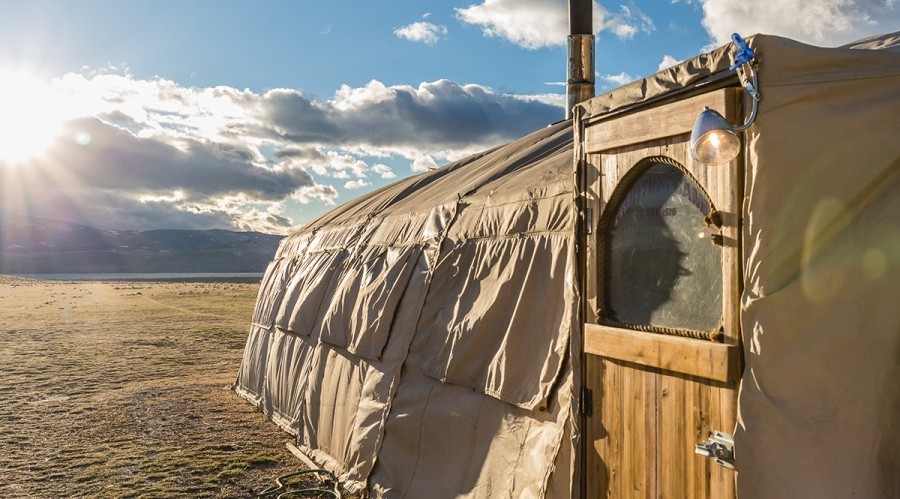A hunting camp means many different things to many different men, but for Vern Raymond and Al Stenhjem it means nothing if not commitment. Not a commitment to each other (it’s not that kind of story), but a commitment to an idea, a connection to wilder times and wilder ways.
For the past 45 years these two men have led a rotating roster of regulars into the wilderness, setting up camps across South Central Montana, making life a little less comfortable but all the more enjoyable.
“By 1967 the game animals in the Big Belt Mountains had vanished,” begins Vern. So the one-time bronc and bull rider, gold miner, carpenter, and contractor hung up his big game gun.
Then he met a man named Al.
“Al had hunted the Big Belts ever since he could hold up a rifle, just as I had,” Vern says. But, like Vern, he had grown tired of trudging through their old stomping grounds only to return home with “nothing more than worn-out boots and an empty gas tank.”
By the summer of 1970, Al began to talk of a near mythical area his uncle used to hunt, abundant in big game deer, elk and moose. Almost immediately friends were found, a meeting made and a plan put into place. A plan, as Al puts it, to “live like kings someplace where we might even find a grouse for a change.”
Nestled near the Gravelly Range, the paradise bordered the Madison River on one side and the Ruby River on the other. It was soon to be a backwoods home away from home for years to come, one known simply as “The Ruby.”
A 12 x 14 ft. army tent, 24 cases of beer, 250 gallons of gas and enough food to feed eight men for a week would cost $44 a piece. “There wasn’t a man at that meeting who could come up with that much dough all in one chunk, so we set up a payment plan,” says Vern.
Al went to the bank the next morning to open the account. When the gal asked him what name he wanted on the checkbook, “Our little group became known as the Ruby Runners,” says Vern.
That first camp was rather crude, and, after stopping at every watering hole along the way, off to a slow start, finally coming together in four feet of snow around midnight.
But you never forget your first, and a couple discomforts couldn’t dampen their spirits. “That tent was so small you had to go outside to change your mind,” Vern jokes. “But Al and I figured we’d died and gone to heaven.”
They didn’t even know they were starting a tradition.
If the camp was crude that first time out, the food was even cruder. “Our cuisine that year consisted mostly of chili, chili con carne and chili concoction. But what the hell, we weren’t there for no Betty Crocker cook-off,” says Vern. “We were there to shoot a moose.”
Luck was on their side as Al, Vern and their friend Jim had all drawn moose permits. And each man claimed a large bull before season’s end.
The camps grew slowly in the early years, both in people and in comforts, but that wouldn’t last. 1972 brought carpeting and a guy named Big Ed. “He enjoyed the beauty of the Ruby and all it had to offer,” says Vern. “But above all, Big Ed was a trucker. Chili served three times a day, washed down with a cold beer was his favorite meal.”
Word spread, and so did the size of the camps, as more and more men caught “Ruby Fever.” More people meant more amenities, and they traded up accommodations from a tent, to a canvas house, to the “Elk River Hilton.” Electricity replaced lanterns and chili was banned as cooking became a kind of competition.
The first setup took two pickups and a station wagon to haul in. By 1979 the camp required 6 trucks, all pulling trailers. They had a few rough spots over the years. In 1980 two hunters (one from out of state) went for an early evening hunt on horseback with clear skies and 50-degree weather. A blizzard blew in without warning. Trapped and disoriented by the whiteout, the men took a wrong turn, falling down a steep slope to the creek below.
They barely made it through the night, huddled under a horse blanket. As the two cold, weary Ruby Runners finally walked into camp the next morning, Vern says, “I never thought I’d see the day when I would be so happy to see a California hunter alive and well.”
After particularly harsh weather in 1986 when the trucks wouldn’t start, the tent stakes were all frozen into the ground and even the whiskey bottle on the stove was the consistency of syrup, “Al and I decided we were going to give the camp to someone we didn’t like,” says Vern. But by the fall of ’87 they were back at it.
As the crowds grew, so did the party atmosphere. “Friends invited friends who invited friends, just to see the most elaborate camp in the country,” says Vern.
They even started hiring a band to come up once a year. “Invite 250 drunken strangers to your house and see how you do,” he adds, speaking of the time Rob Quist from the Mission Mountain Wood Band showed up in his tour bus to play a show. As the number of people skyrocketed, so did the number of dogs. Both became a problem, particularly the latter. “They barked, fought, fornicated, lifted their legs on the beer coolers, the tent poles, the wood stove and nearly knocked over anyone coming to visit,” Vern says.
It was time for a change. Egos were bruised and toes were stepped on but numbers were cut back to more manageable means. Now everything is pretty much by invitation only.
These days the hunting camp is more about the men then it is about the meat, though maybe it always was. “We can see elk up on the mountain, but we wouldn’t walk up there ourselves,” Vern jokes. “We had to start running with a younger crowd.”They always manage to harvest a few from the herd, remembering what it is to provide, to take from the land and plug into something primal.
17 men set up camp last fall, and, as tradition dictates, as many took it down the final day of the season.
Ten years is a tradition, 25 a testament. 45 years is pretty much a miracle.

